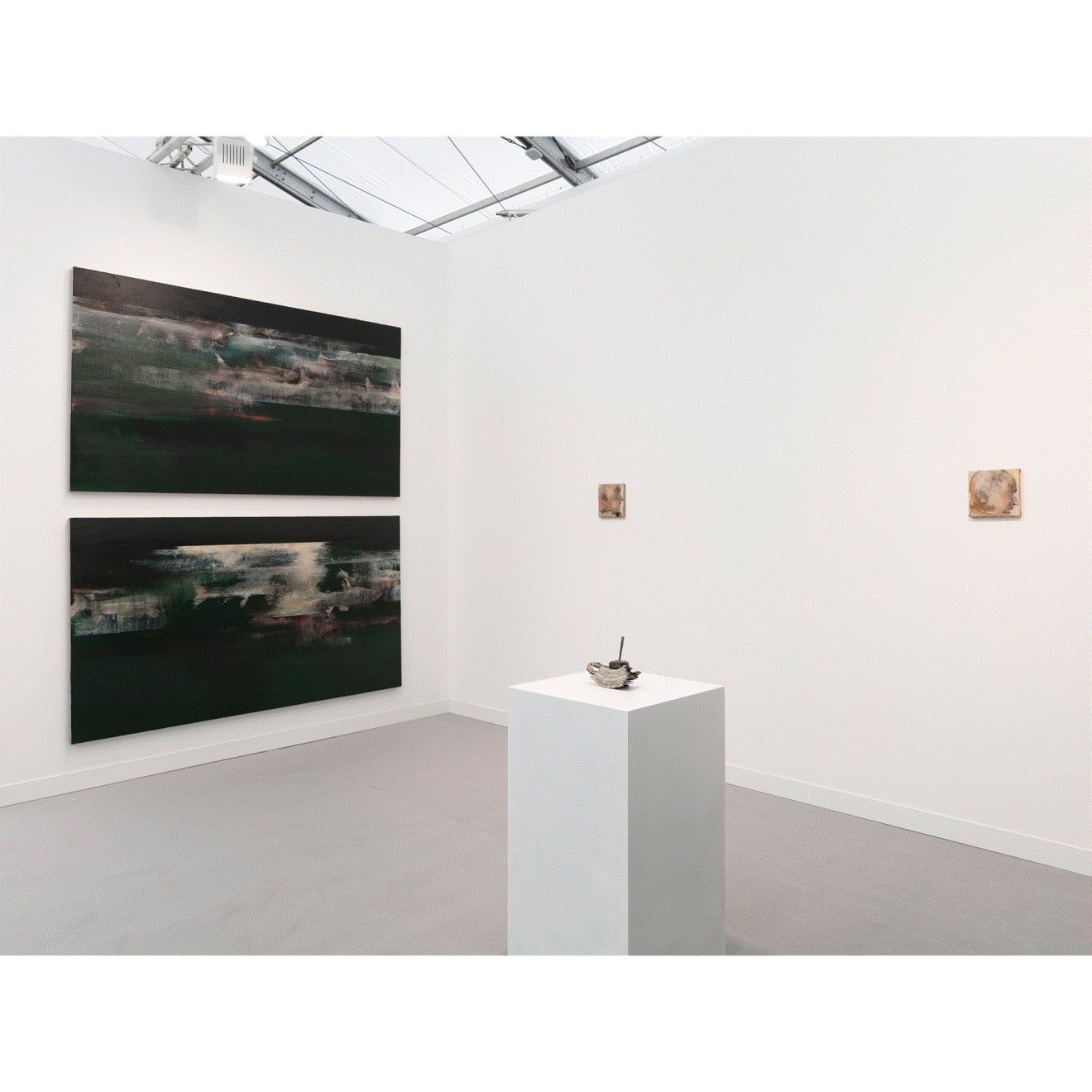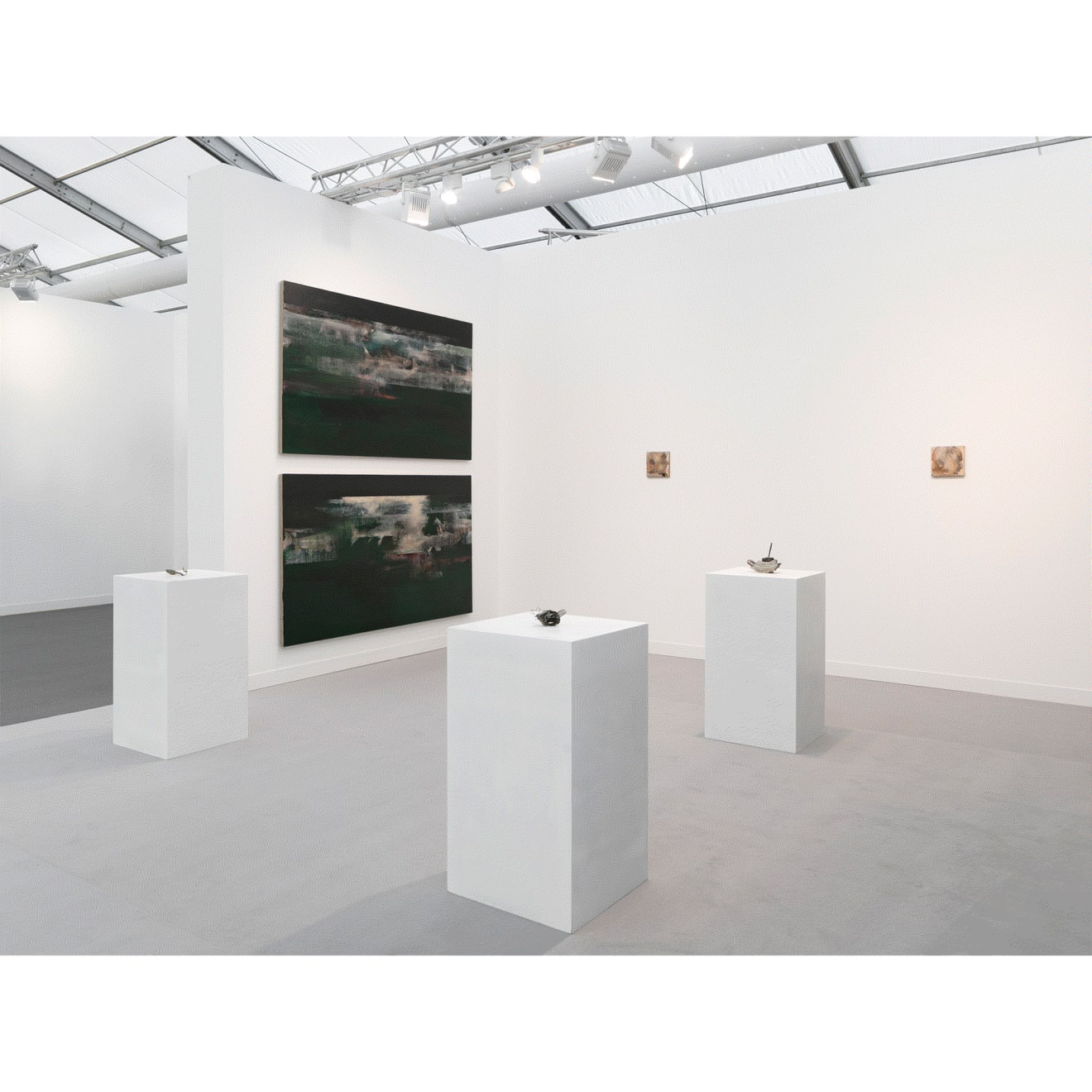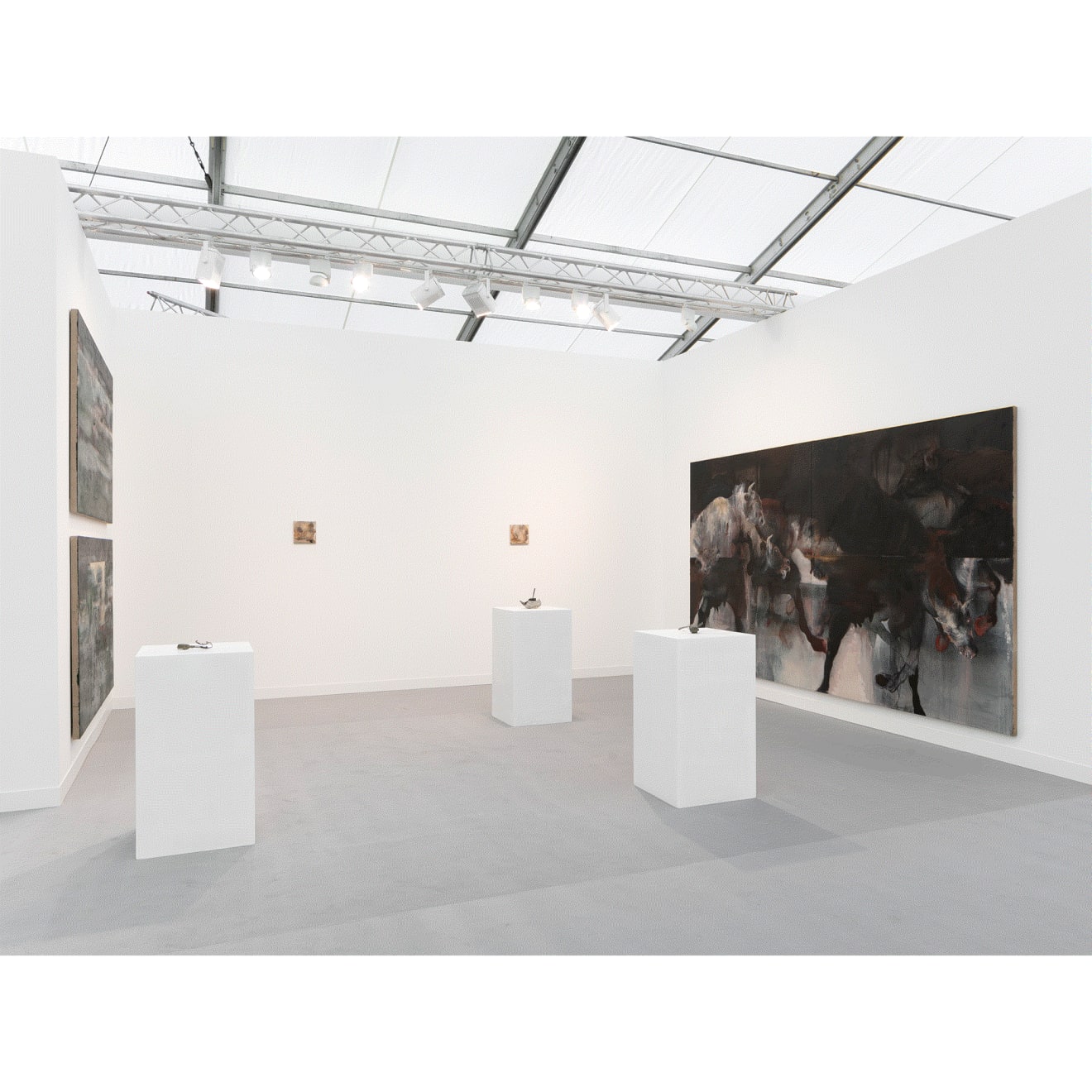Patrick H Jones & Gillian Lowndes: Frieze London
Patrick H Jones makes paintings that deal with personal loss, memory and the human condition. His subjects include fish, birds, bulls, horses and the human body. Always painted over many layers, the subjects come into focus and recede through fleshy, visceral surfaces. Despite their disparateness, there is a distinct lack of hierarchy between the subjects; they appear to share the same condition and exist in the same purgatory spaces. In the large work Canada Water (2021) a frenzied mass of cows and bulls clamber, stumble and panic, locked in a repetitive action or thought process. Despite this animal’s historic symbolism of strength and stubbornness, the overwhelming sense in this work is of vulnerability and excitement interlinked with anxiety. Within the Circle (2021) works murky, submerged planes are interrupted by a shoal of fish momentarily glimpsed though flashes of fractured light and colour that interrupt the otherworldly calmness. Evoking the sensation of time cascading forward, but also standing still, these works speak of a blurring of memory, and of a sanctuary within the monotonous.The repetitive forms and the weightiness imbued in this work and Jones’ wider practice is directly linked to his own past, ongoing, and unrelenting mental state surrounding the passing of his father.
Patrick H Jones (b. 1987, London, UK), lives and works in London. Recent solo exhibitions include: Dusk, LINSEED Projects, Shanghai, 2022; After Dad, The Sunday Painter, London, 2022; Limbes, Galerie PCP, Paris, 2021; CONDO 2020, The Sunday Painter, London, 2020. Recent group exhibitions include: Patrick H. Jones & Gillian Lowndes, Frieze London, London, 2021; Reconfigured, (curated by Rose Easton), Timothy Taylor, New York, 2021; Turps Banana Final Show, Turps Banana, London, 2019; DREAMTIGERS, The Gallery Soho, London, UK, 2018; Juggle, Plaza Plaza, London, 2018; SET 24, The Art Academy, London, 2018; Artist of the Day 2018, Flowers Gallery, London, 2018; New Contemporaries, South London Gallery, London, 2018.
Gillian Lowndes was one of the ceramic world’s most daring, radical and original artists of the post-war generation. Working during a period when the majority of practitioners of the medium were concerned with the functional and decorative, Lowndes’ sculptures stand out through their transgression of the ceramic conventions of the time. Her work was often a result of responding to her immediate environment. In 1970 the artist moved to Nigeria for eighteen months; this period prompted a major turning point in her career as she witnessed for the first time the combination of different materials in single objects. The Brick Bag series, a watershed moment in hercareer in the early 1980’s, was the result of witnessing the overflowing piles of plastic bin liners that accumulated in London during the waste collectors’ strike between 1978 and 1979. Lowndes operated on the border territory between fine art and craft, and is renowned for her sensitive investigations of material and process, of serendipity and sculptural form. Pigeonholed by the craft establishment of the time, her work predated the expanded ceramics field of the late twentieth and early twenty-first centuries, while her pioneering transformation of clay and found objects places her firmly in the language and discourse of sculpture, a critical context that remained closed to her in her lifetime.
Gillian Lowndes (1936–2010) born West Kirby, Merseyside. Studied at the Central School of Arts and Crafts, London, 1955-58, and Ecole des Beaux Arts, Paris, 1958-60. Her work is in numerous international collections, including The Arts Council England; MIMA Middlesborough; The Hepworth Wakefield, Leeds; Bristol Museum Art Gallery; British Council, London; Crafts Council, London; Henry Rothschild Collection; Landesmuseum, Stuttgart; Newark Museum, USA; The Anthony Shaw Collection/York Museums Trust; The Fitzwilliam Museum, Cambridge; Victoria and Albert Museum, London.






